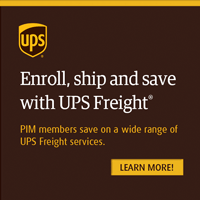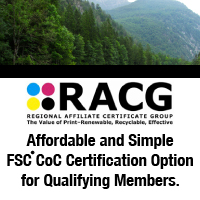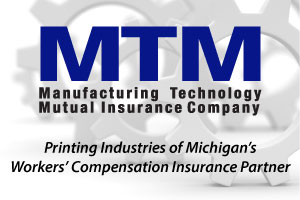
Nov 6, 2017 | Sales & Marketing

By Joe Rickard
Getting in front of senior executives can quickly change the future of a salesperson or a printing company. There is no better way to quickly develop and generate large sales than to gain access to senior decision makers.
Great printing salespeople can impact decisions about strategy, budgets, and marketing that are driven by senior levels of management. Many of these decisions cannot be found in the purchasing or department manager levels.
Executives want to talk to salespeople who can help them address their “big” problems and opportunities. For salespeople, that requires confidence, a thorough knowledge of graphic and digital communications, and an ability to bring creative ideas to their customers.
There are two great outcomes of an executive sales call: one is to gain agreement that what you have to offer is valuable to the executive’s organization; and two, the executive opens the organization to further sales meetings.
FIVE STEPS FOR A GREAT EXECUTIVE MEETING
1. Preparation It may take hours of preparation to gain just one great meeting with the right executive. It is worth it. The first challenge is to identify those CEOs, presidents, division presidents, and executive VPs in each targeted account. Having detailed information about their company, its objectives, its campaigns, and programs will increase the likelihood of success in securing the first meeting.
With gatekeepers blocking the way, and the likelihood that the target will not pick up the phone, a brief and impactful talk track to generate interest must be prepared in advance. In a few cases, the executive may actually pick up the phone. A short crisp message and a simple request for a meeting is the best strategy.
2. A Great Entrance A great first impression is vital. Though rapport building is important, keep the superficial banter to a minimum. Executives are looking for information and expertise. A professional appearance and demeanor will help. Briefly state your purpose, a brief overview of why you are there, and what you expect from the meeting. Make sure you share amount of time you will need for this meeting. Then just ask, “Is this okay with you?” A confident start will establish a solid foundation for the rest of the sales call.
3. Share the Dream Once the stage is set, it is time to share what you have discovered about the customer and their problems. You can do this by using facts and research on issues being faced by similar organizations and sharing them in a tailored way.
For instance, as part of your story to a hospital executive looking to expand their services, you could say, “According to the Direct Marketing Association, 83% of people find direct mail easier to absorb than email. We have found that our hospital clients who integrate direct mail along with their digital communications have increased their ability to sell additional and new services to their patients.”
Be prepared to share your case studies on how specifically you have helped similar organizations. By sharing facts about how your company and printing has helped other companies improve their performance, potential customers will want to hear more.
Then follow up with questions like this:
“How are you currently marketing your new clinical services?”
“What is the strategy of the hospital to attract new patients?”
“How will you address the new trends in the market?”
By asking probing questions, listening and letting the customer talk about the company and their priorities, the executive will become part of the sales call. Creating an optimistic vision for the customer will allow the discussion to continue.
4. Sync Up and Discuss Linkages Now is the time when the salesperson connects what has been discussed by the customer to how your company can help. By tailoring and summarizing the key points of the customer’s problems, you will be able to link what you sell to what the customer needs. A good exchange of ideas and agreements on how the salesperson can help the customer will lead to a close.
5. Close for an Open Door The final step is to gain agreement on what needs to be done next. It is rarely the time to close for an order. It is an opportunity to gain the executive’s endorsement for access to key influencers and stakeholders who are involved in the decision chain. The ideal goal is an open door to developing a well-qualified recommendation to visit other departments and staff. Since it often takes much time to gain a good meeting, preparation and execution is paramount. There may never be another chance to get a second meeting.
There has never been a time in recent history where it has been as important for printing salespeople to raise their level of contact within their customer organization. There is so much change in how printing can impact a customer’s top and bottom line that executives will welcome a meeting with a knowledgeable salesperson.

Nov 6, 2017 | Industry News
 Hatteras, Inc. announced today that they have acquired I AM DETROIT, a branded clothing and apparel merchandiser in the city of Detroit, located at 450 W Fort Street.
Hatteras, Inc. announced today that they have acquired I AM DETROIT, a branded clothing and apparel merchandiser in the city of Detroit, located at 450 W Fort Street.
Founded in 2012 by Bryan Young and Brandon Yopp, I AM DETROIT currently markets and produces logo designed wearables including t-shirts, hoodies, hats, clothing and other key advertising specialties to corporate clients and local businesses.
IAD will continue to operate at the same City of Detroit location, now as a subsidiary company of Hatteras, Inc.. The companies will share print resources going forward as they grow production capacity and expand the combined product line-up available at the Fort Street location.
James Nesbitt, Senior Vice President of Hatteras said of the acquisition, “We are excited to have both of IAD’s founders, Bryan Young and Brandon Yopp, join our team. These guys are smart, successful, and contagiously enthusiastic. We’re look- ing forward to building the brand that they founded both downtown and across the country online. We see a lot of cross- marketing opportunities for our products between our current corporate clients and IAD’s client base”.
Founder and President of Hatteras, Claudia Nesbitt also released the following: “We wanted to take an active role in the exciting revitalization currently happening in the city of Detroit. Having a location on Fort Street in the heart of downtown provides us with the perfect opportunity to become a part of this expanded business community.”
Hatteras Inc. is family owned and is one of Michigan’s leading and most diversified printing, imaging, and information distribution companies. Founded 40 years ago, the company now boasts seven manufacturing and service locations and offers a broad mix of sheet-fed, web, wide-format, data driv- en technology, data management, and digital imaging and mailing of all types. Hatteras, Inc. along with its variable print division, Focus 1, serves major corporate partners in a broad selection of industries, including automotive, healthcare, financial, and the public sector. The company is certified by the Women’s Business Enterprise National Council (WBENC), and maintains a comprehensive set of security controls that are independently audited to HIPAA, SOC2 and SSAE 16 standards and is celebrating 40 years of business this year (1977–2017).
For more information, contact: Becky McFarlane, Executive Vice President, 313.624.3300 * bmcfarlane@4hatteras.com

Sep 6, 2017 | Strategy

With Direct Mail
By Summer Gould
Direct mail is a great way to convert prospects and get customers to make more purchases. First of all, direct mail is a physical and tangible medium you can exploit. Using touch as part of the direct mail moment shifts the brain into a deeper level of engagement. Your prospects and customers understand and remember what they read on paper better than what they read on a screen. Make sure that they remember your message.
So how can you harness this power?
1. Attention: First you need to create a mail piece that draws immediate attention with graphics and copy. Keep in mind that the images you select should convey your message. Our brains focus on and process images very quickly, so they are a very important part of your mail piece design. You want your images to help you stand out in the mail box and from the competition. Scope out what they are doing so that you can be better.
2. Integration: Your prospects and customers expect to be able to do more with direct mail. Integrating mobile technology, personalized URLs, as well as physical elements such as special folds or textures to provide a longer engagement process with your mail piece. The longer the interaction the more likely they are to purchase.
3. Simple: Keep your copy easy to understand. Make their decision to buy from you easy. Using less words and more commonly used ones will help you to generate a bigger response. Make sure to avoid the use of acronyms. They can cause confusion and a confused person does not make a purchase.
4. Consistency: Marketers that continue to send direct mail to prospects and customers over a period of time find that they get better response rates. Sending mail to someone on a regular schedule helps to keep your business top of mind. When the right offer arrives at the right time people jump all over it. This is not to say that you should send the same thing over and over again. Change up your offers and images, but make sure your branding stays the same so that they recognize you from the past mailings.
5. Personalization: Use your data to its maximum potential! Make your offers personalized to what your prospects and customers want and need. You can base this on many factors such as purchase history, demographics, psychographics and so on. Just putting someone’s name on a mailer is not the same as a truly personalized piece. Images, offers and messaging should all be part of your personalization. You can group similar people together so that you have less versioning. Look, your competition is looking for ways to beat you, so don’t let them! Stay ahead of them with your marketing planning and execution. The early bird gets the worm in direct mail too, as long as the mail pieces are well thought out with great design, great offers and the right list of people. Be a leader in your marketing by standing out! Get creative with your design and your data to make mail pieces that your competition has never even thought of. The power of a tangible mail piece for your marketing is driving results. Use the printed piece to stand out in ways that digital marketing can’t. Think of texture, cut outs and special folds as a way to really embed your message into the brains of your prospects and customers. Are you ready to get started?

Feb 15, 2017 | Technology

by Charles Groce, CEO of Pearl Street Consulting
Google announced a few weeks ago that the Chrome web browser would start marking sites that don’t support HTTPS as “insecure”, leveraging its web browser market share to improve web security standards. Soon after, Mozilla jumped on board and indicated it would do the same with the Firefox browser.
What does this mean for print and for you? Go to your computer, open your favorite web browser, and try entering in HTTPS:// in front of your company website URL instead of the standard HTTP:// If you get a message about an Insecure Connection, then your site is not secured by what’s called an SSL (Secure Sockets Layer) certificate. The same goes if it’s blocked and won’t load at all.
Without going too much into the technicalities, think of an SSL certificate as a letter from a close business associate endorsing you and your business as authentic. This is what an SSL certificate issuer does for your website. They verify it is where you say it is, that you own it, and then when a potential customer visits your site, tells them that your website is authentic and your web server isn’t trying to steal information. All of this goes on under the hood of your web browser without you having to do anything as a business owner…except have the certificate. Pretty neat huh?
So why didn’t this come up before? Back in the early web, most data online was public text and images. HTTP actually stands for Hyper Text Transfer Protocol, and for the early web this was fine. However as eCommerce began to evolve, and people began to understand how the internet could be used in business transactions, attempts to steal information and defraud users became more sophisticated.
The most classic of these is the so called “man in the middle attack”. Without a way to verify a website resides at a particular server, there’s nothing to stop a third party from pretending to host your website and get information submitted to it by users. Moreover, information intercepted in by an attacker can be sent on to your site in such a way that you think it originated from the legitimate user. Thus neither you nor your customer would know there was a “man in the middle”, passing information back and forth completely undetected.
The solution to this is the SSL certificate, which allows encrypted traffic in the form of the encrypted version of HTTP, HTTPS (HTTPS Secure or HTTP over SSL), and introduces a third party certifier into your internet transactions. Prior to this week, HTTPS was considered optional and really only a necessity for those sites accepting credit card payments over the internet or offering browser-based email access (also known as webmail). As of the end of January, however, SSL has more or less become a practical requirement.
If your site doesn’t have an SSL certificate installed, your customers will start seeing “INSECURE SITE” notifications in their Chrome and Firefox browsers, and may think twice about sending work your way, especially if the data being sent is sensitive and has any liability attached to it. Be smart: reach out to your IT vendor and get this going today.
As far as the costs, that’s mostly for you and your IT vendor to work out. SSL certificates typically cost $50 to $100 dollars and have to be renewed annually. GoDaddy can set you up. However there’s also a free service called Let’s Encrypt which issues SSL certificates, but you may need to have the proper environment for this to be practical.
It’s best to stay ahead of these changes. Google already announced last year that it would begin degrading websites that don’t support HTTPS in their search results. With this latest announcement, they’re changing the web, and making it more secure. When you think about it, this is a historic moment in the life of the internet.
About the author: Charles Groce is the CEO of Pearl Street Consulting, a Michigan-based IT, web, and software consultancy. Charles is also the founder of osforprint.com, an open source technology solutions provider for the printing industry.

Feb 15, 2017 | Sales & Marketing

by John Raithel, President of Colorbar, Inc.
With the challenges of a slower growing economy, salespeople are under increased pressure to sell more work and at better margins. Increased sales performance pressures can and often do rush salespeople through the sales process and mistakes are made. In haste, they fail to fully plan for the sales call and how best to approach their prospect or customer visit. An area that is often overlooked by salespeople is; how will the purchaser perceive or feel about the sales visit? Feeling Empathy.
But is it even possible for salespeople to feel empathy for their customers when their own burden is so great? Yes, it is, and essential to sales success. But what does empathy mean? Webster’s definition is “the capacity to understand or feel what another person is experiencing from within the other being’s frame of reference, i.e., the capacity to place oneself in another’s position”.
Sales trainers touch on the idea of empathy but somewhat miss the mark. Their message for sales success is to be a good listener, find client issues and offer solutions…consultative selling. I agree these skills are very important, but they are not at the core of long-term sales success. Empathy is.
To achieve lasting success, sales professionals must understand and feel what their client is experiencing. They must adapt quickly to their client’s changing frame of reference, and since no buyer or sales situation is ever the same, salespeople need to focus on the skill of feeling empathy.
Empathy comes naturally to some people, but for others it requires more attention and thought. This doesn’t mean that one person is more genuine or better than the other, as long as the capacity to understand or feel what another person is experiencing from within the other being’s frame of reference is achieved.
While researching and preparing for a sales call, think about how your customer may view your findings. Make a list of questions to ask your client that will give you insight on how they feel and think and listening to their answers will give you a better understanding of their world. Also, keep in mind, people in the same organization don’t feel the same or have the same objectives and motivations, or even view problems the same. Your goal is to better understand how each person you are interacting with feels.
Here is just a small list of thoughts that may help you better understand your customer. There are many more that may fit better for you.
How is their day going? Not just your standard meet & greet question “how ya doing?” but are they focusing on your sales visit or is it elsewhere?
Are they feeling appreciated, burdened and overworked?
What is expected of them? Not just their job description, but from their company, themselves.
How are they evaluated? What are their goals? What do they have to deliver to get recognition, promotion or financial reward? What is their company culture? How do they view vendors? Does their personality and business style match their company’s culture and position? By not having empathy for your buyer, they won’t trust you to share their real problems. By not understanding what challenges your customers have, most likely your solutions will be wrong. You can’t just ask them what their problems are unless you first built a trusting relationship built on empathy. If you do, most likely the problem they have is…”the price is too high”.
So, understanding your buyer’s frame of reference is key to becoming a trusted advisor and achieving long-term success. Pre-sales call preparation is the key, even for existing customers. Changes happen quickly today so never assume. Researching companies and people is a lot easier today with social media websites, but don’t let that be your only source. These sites can provide a great deal of information. Company websites tell a lot about the organization by how it looks, etc. When researching buyers, stroll down on their LinkedIn page to see what organizations they follow or groups they belong. How many 1st connections do they have? Remember you’re trying to get a better sense of who they are as people and the culture they work in. Talk to people who may have experience with them. Has your company done business with them in the past, maybe with a different origination? Anything to help you prepare to see the world through your customer’s eyes.
Don’t try to solve problems unless you know for sure that’s what the buyer wants. People don’t always want you to solve their problems. Their employment may exist because of company’s problems and feel threaten when a vendor offers to fix them. You are there to sell, if fixing a problem helps in that goal, great, consulting is a solution.
Don’t assume your technology or efficiencies are important to buyers. Technologies, efficiencies and equipment may be important to some but not to others, even within the same organization. Remember each person in a purchasing role or a purchasing influencing position sees the vender/buyer relationship differently.
Also, don’t mistake how you feel about purchasing it is how others do as well. Not placing yourself in the shoes of your customer will cost you business. Buyers lean to their comfortable buying style, but can and do change according to their internal situations. What worked with them in the past, may not work now, so keep current with your buyers and their companies.
Being a sales professional is a great and rewarding career, but to have long-term success a commitment to constant improvement and empathy is needed. If the commitment to this is lost, soon, so will be the customers. With experience, training and continuing education, you will achieve great success, but always remember, as a strong building starts with a strong foundation, so too must a sales person start with empathy.
About the author: John Raithel, President of Colorbar, Inc. jraithel@colorbarinc.com




 Hatteras, Inc. announced today that they have acquired I AM DETROIT, a branded clothing and apparel merchandiser in the city of Detroit, located at 450 W Fort Street.
Hatteras, Inc. announced today that they have acquired I AM DETROIT, a branded clothing and apparel merchandiser in the city of Detroit, located at 450 W Fort Street. 










